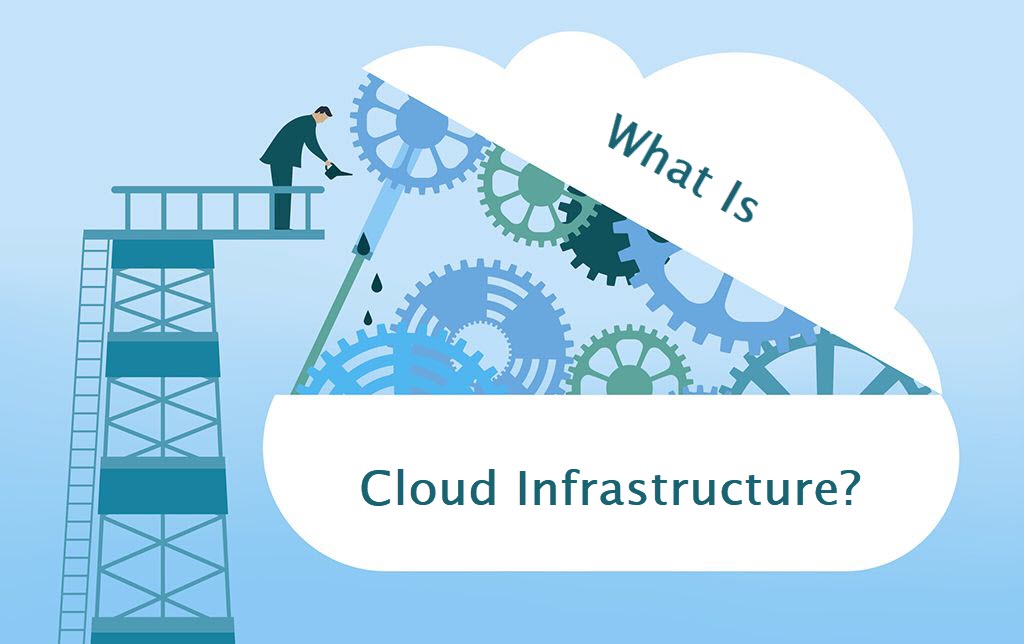
To attain flexible cloud infrastructure, the business organization prefers to opt for cloud computing over traditional infrastructure. Because in the cloud, the organization doesn’t need to manage and invest highly in hardware and software for maintaining an in-house data center.
But what is cloud infrastructure, how organizations can implement cloud computing infrastructure – that’s important to understand to scale your business to new heights.
In this article, we will cover all its importance, best practices, and what more businesses need to know about cloud infra.
What Is Cloud Infrastructure?
Cloud infrastructure term refers to the collection of software and hardware components required for supporting cloud service to the customer. A cloud-based infra has multiple key elements (components), such as:
- Computing Power
- Networking Devices
- Storage
- Servers
- Software
- and other storage resources
All these components require for creating cloud applications. These components are stored in a virtual space that can be accessed remotely using the Internet, WANs, or other means.
What are the Elements of Cloud Infrastructure?
There are 3 elements of cloud infrastructure that are required to create a complete cloud service:
Hardware:- The cloud infrastructure hardware is composed of servers, processors, memory, power units, and more – all these elements are a major factor for the performance, availability, security of the business organization.
Virtualization:- In cloud computing, the role of virtualization is to connect all hardware and make sure that all the devices are up & running, without any association with hardware. It permits users to remotely access the services and applications
Storage:- Infrastructure will likely need a good amount of storage for creating a backup of saved files and server data to connect everything for remote access. For connecting cloud storage and hardware, there are 3 storage solutions are available:
- Block Storage:- In block storage, the data is stored in form of blocks that are stored in chunks. The data saved is static that doesn’t require constant changes.
- File Storage:- This is like the file manager storage (FMS) system on a desktop PC.
- Object Storage:- Used for storing the data that requires constant changes.
The Benefits Of Using Cloud Infrastructure
Switching from physical storage to cloud lowers the overall cost (both setup and long-term) of infrastructure. As you don’t have to purchase and maintain hardware and software that are essential for running your business.
Cloud infrastructure allows you to access everything using the internet connection. Apart from this, it increases cloud scalability by providing freedom to organizations, operate, and expand as business demands.
The key benefits of cloud infrastructure are as follows:
Security:- A powerful and well-constructed cloud infrastructure can provide better protection against cybersecurity threats.
Flexibility:- A cloud-based infrastructure not only offers remote access but also enhances performance by providing access to the same data from multiple devices.
Speed:- Another key benefit of cloud infra is the speed it offers to upscale or downscale the IT resource as the business demands.
Best Practices For Efficient Cloud Infrastructure
Following are the best practice for implementing cloud infrastructure effortlessly:
- For business organizations opting for cloud infrastructure is a strategic change that should be implemented with the same focus as other changes. This is to ensure an effortless and smoother transition of the entire organization to the cloud.
- The next important step is finding the right cloud solution provider for your business. Depending upon service, support and cost you can research between different cloud solutions.
- Stay up-to-date with the latest market trends and use them according to your business needs. Cloud technology is constantly upgrading, implementing these technologies with your business can increase the productivity of the business.
Why Do We Care About Cloud Infra?
Having a well-built cloud infrastructure can provide the same features as physical infrastructure with better performance, lesser cost, flexibility, and scalability. These features play a key role in the digital transformation of business and are available for private, public, and hybrid cloud environments. The organization rents these cloud infrastructure from cloud vendors and needs to pay-as-you-use.